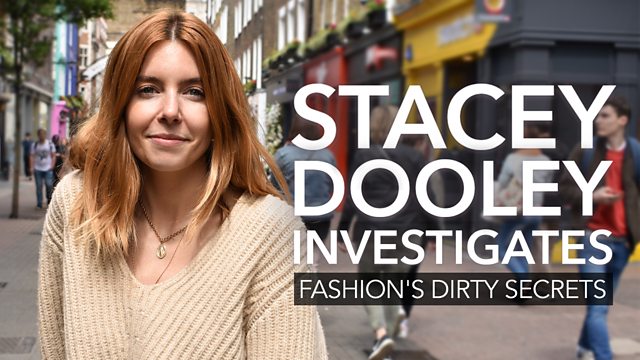In the wake of last week’s global scientific conference giving us 12 years before climate change becomes irreversible, a documentary on the effects of the global fashion industry could not seem more poignant.
Stacey Dooley Investigates: Fashion’s Dirty Secrets is a harrowing insight into the realities behind something that all of us take for granted – our shopping habits.
“Shopping is a way to unwind” states Dooley; a truth that resonates with many of us in the age of fast fashion. But when buying new clothes, whether online or in store, the majority of us are too consumed by the latest trends to stop and take a moment to consider the larger-scale impacts of our purchases.
This in fact is highlighted when Stacey takes to the high street to ask the public which industries they believe to be the most polluting. Surprisingly few are aware that the fashion industry is actually the second largest polluter in the world after coal and oil – the modern retail environment has been cultivated in such a way that the production process of a garment has become completely disconnected with the end product that you see in store.
Heading behind-the-scenes to find out how bad the pollution problem really is, Stacey travels to one of the largest environmental disasters in the last century – the Aral Sea – to show just how destructive unsustainable cotton farming can be. What once was a beautiful inland oasis has become a dry desert bed thanks to the staggering amounts of water required by cotton farming practices in nearby Uzbekistan. It can take over 15000 litres of water to make a single pair of jeans, so just imagining the impact caused by an entire wardrobe full of clothes brings to light the unfathomable scale of this issue.
So why not attempt to hold companies to account? After calling many of the biggest clothing brands in the UK to talk about their views on sustainability, what quickly becomes evident is that these huge corporations are unwilling to face journalists like Stacey to talk about the issues created by their own industrial practices. Despite preaching to their customers about their sustainable initiatives, these companies are too absorbed by self-image to deliver transparency where it is needed most.
So Stacey heads to Indonesia to explore the issue further. Indonesia produces one of the largest shares of the world’s clothing and textiles – have a look at the labels in your wardrobe and chances are a large amount of your clothes will be from there or Bangladesh.
The scene is bleak; garment factories are pumping waste and water polluted with dyes into the Citarum River (the longest and largest river in West Java), which for many local residents is the main source of water for drinking and bathing. Mercury, cadmium, lead and arsenic have all been found in the river water, and are all linked to nearby textile factories.
Needless to say this water is causing huge health problems, many of which are untreatable, for the people surrounding the river. Stacey meets with a team of local activists who are part of an ongoing battle to prevent more pollution and hold the factories responsible for their actions, but many are worried about threats of violence from local gangs.
So who is to be held responsible for these issues? An email to the Secretary of State for the Environment asking for answers about initiatives that the government are taking to reduce the textile industry impact in the UK gets a standardised reply about plastic bags and microbeads. “It’s so dismissive… it’s like ‘here are three sentences that we’re gonna feed you’ – it’s almost insulting to our intelligence” states a frustrated Stacey. But if the government and the companies behind these issues won’t talk, then the next step is to target the consumers.
Stacey talks to influencers – including Niomi Smart and Susie Lau – about the power we have as consumers to change the way we buy clothes. “Rather than going directly to the retailers and having this very honest conversation, I would talk directly to my audience…[about] this whole idea of ‘as a consumer let’s change our attitudes’.” Niomi argues that if the companies won’t listen then the best way to get their attention is to use our purchasing habits to send a message.
By buying less fast fashion and demanding more transparency from clothing retailers, we can all make a positive impact in our day-to-day lives. This doesn’t mean giving up shopping entirely, it just means being more sensible with how and what we buy and where we buy it from. All of us have the power to make change, so let’s start using it.
By Robert Steel
Image: BBC

